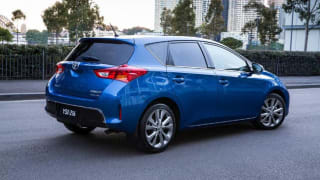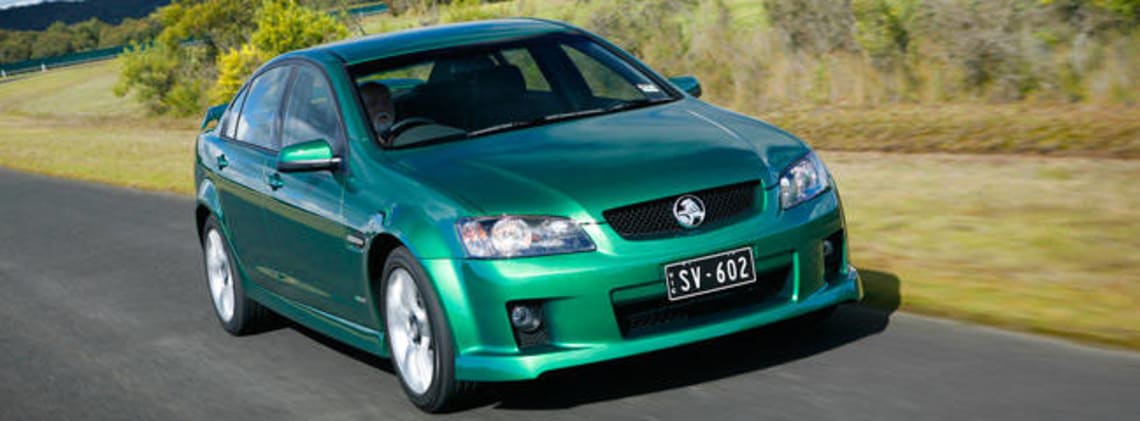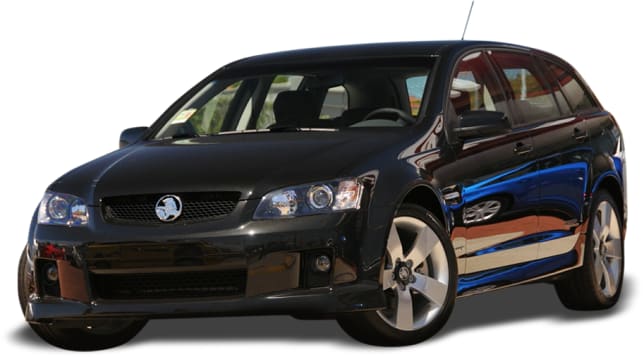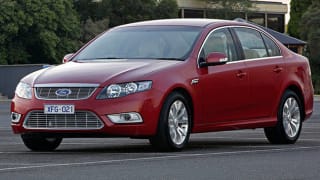As large car sales continue to fall, GM Holden has produced what it hopes is a life support system for at least one.
Holden's answer to the malaise that has afflicted the Commodore and its ilk (annual sales for the segment have fallen by more than 100,000 in the past decade) is the promise of better performance and better economy from a pair of high-tech engines.
"With my marketing hat still on it is a happy day when the engineers can come to you with the offer of better performance and better fuel economy ... that is win-win," GM Holden's newly-installed Chairman and Managing Director Alan Batey says.
Explore the 2009 Holden Commodore range
"I really believe people still want the size of a Commodore, but they also want the economic advantages they perceive in smaller engines and cars. This technology offers an answer for those customers."
Drivetrains
For the first time Holden will offer a pair of V6 engines coupled to a new 6-speed automatic in its locally manufactured models with the 3-litre finding a home in the Omega and Berlina sedan and sportwagon models while the rest of the Commodore range will come with the 3.6-litre. Prices will rise by $700 for the 3-litre models but stay unchanged for all 3.6-litre models.
Both engines feature spark ignition direct injection (SIDI), delivering a claimed improvement in fuel economy of up to 13 per cent better economy and up to 14 per cent lower CO2 emissions.
Official figures for the Omega 3-litre are 9.3 litres per 100km, down from 10.7L/100km in the superceded model while the SV6 Ute promises the biggest improvement for the 3.6-litre, down 13 per cent to 10.L/100km.
The second half of the ‘magic’ equation is that the power output from the 3.6 is up 15kW to 210kW with the 3-litre developing 190kW.
Holden claims savings of up to $325 a year are possible for an average driver travelling 20,000km a year while fleet buyers — one of the key targets for the 3-litre car — could double that.
Efficiency technology
While the direct injection technology is at the heart of the economy drive, there are a swag of other modifications that go to improving the Commodore's day-to-day efficiency.
A new low rolling resistance tyre from Bridgestone is standard on all 16- and 17-in rims while new tyre compounds result in a weight saving of around 2kg a corner; idle speed for the 3.6 has been reduced by 50rpm below that of the standard Alloytec engine; a lighter high-efficiency alternator reduces generator loading; regulated voltage control allows greater use of the battery through closer monitoring of charge and lowering demand on the generator; and deceleration fuel cut where fuel is sequentially cut off to each cylinder when the car is coasting and then reinstated when required.
Driving
What it all adds up to on the road is the potential, if the driver applies a little application and concentration, for appreciable savings without going to unrealistic lengths.
On the launch drive — albeit with targeted application in a fuel efficiency competition — the SIDI Commodore (this, according to Holden, is not a VEII) returned some quite remarkable figures. The 3L claimed a 6.4L/100km efficiency in a 100km run at an average speed of 72km/h while the 3.6 was capable of well below any official sticker figure with a best of 7.2 under similar conditions.
They were not entirely real world but neither were they achieved with air-conditioning off, side mirrors folded and engine switched off on downhill cruises.
Apart from what is going on under the skin there is precious little about the Model Year 2010 Commodore that will set it apart from its less efficient forebears. A couple of SIDI badges and that's your lot.
The biggest endorsement of Holden's strategy is the manner in which the 3-litre cars perform. Apart from a little less urgency under the right foot and if you are driving the smaller engine in search of efficiency that shouldn't be an issue there is little to set the cars apart from the rest of the range.
The new six-speed gearbox has been calibrated to provide a perfectly adequate launch feel and near to seamless changes. Across the Commodore range one of the engineering targets was improved noise and vibration and while it is not earth-shattering there are definite steps in the right direction.
The use of the new low-RR tyres instigated a change to the rear suspension with cross axis ball joints installed, improving stability and on-centre feel. The suspension changes have also been implemented on models that come standard with 18 and 19-inch rims for which the new tyres are not available.
The most immediately noticeable difference between the 3L and 3.6L cars is in the steering and front-end feel where the reduced engine mass and smaller, more highly inflated tyre package give a more nimble impression.












